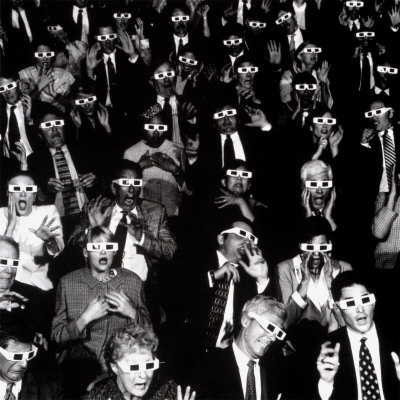i recently read susan sontag’s “notes on ‘camp'”. sontag introduces the camp sensibility through a numbered list of definitive qualities. one of my favorites:
“#34.Camp taste turns its back on the good-bad axis of ordinary aesthetic judgment. Camp doesn’t reverse things. it doesn’t argue that the good is bad, or the bad is good. what is does is to offer for art (and life) a different – a supplementary – set of standards.”1
inspired, i wanted to adopt the format to work through the concepts of cult cinema that i’ve been researching and workshopping for my thesis. however, a major starting point for my argument is that cult film rests upon intertextuality and a postmodern identity- one that is constantly referencing and remixing existing cultural objects. if formation of discourse relies upon dialectic layering of ideas, is it even possible to write a definitive list of characteristics for anything?
because of this, i’d like to make perfectly clear that this list is open source. i’m ready to add, subtract, multiply or divide any of the ideas presented here. like cult film events themselves, your participation is necessary in order for this project to be successful. furthermore, as Sontag notes of ‘camp’, it seems impossible to treat cult film in a dry, academic manner. to do so would be to extract both the irony and the humor from it.
so, i’d like to open with a vignette of one of my favorite cult film experiences. i was on the verge of moving from the city i’d grown up in. i’d never moved before, and i was terrified. a few weeks before the actual move was my birthday. by some divine providence, my favorite independent theatre in town (tower theatre for those who live in utah) was showing PeeWee’s Big Adventure at midnight during the weekend of my birthday. i attended with bells on. the whole theatre knew the entire script. they would answer questions, anticipate lines, laugh LOUDLY & i think someone may have cried when PeeWee’s red cruiser bike was discovered missing. when PeeWee hopped up on the counter of the biker bar and danced to Tequila? FORGET ABOUT IT. the Time Warp seemed about as interesting as the lindy-hop. as an audience, we came to the theatre strangers, but during the flick, we were all the best of friends. our proximity and familiarity with the movie united us. then the lights came up and we dispersed outside the theatre.
so, with your favorite cinema experience in mind, I ask you to come along with me in an analysis. let’s begin at the beginning and figure out what the term ‘cult’ may mean in general.
1. ‘cult’, as a term, is typically used to refer to overwhelming veneration or religious devotion to a specific figure or object. often, the ‘cult’ term is used to negatively describe fanaticism. the term’s root is from the latin cultus meaning “care, labor, cultivation and culture”.
2.cult film, refigures the relationship of the term. film historians often use cult cinema to refer to a certain genre of non-mainstream films that garnered a specific type of attention. the films had few shared characteristics, among them: late-night show times, low budgets and poor distribution. additionally, they usually represent the lives of outcasts.2
3.however, repurposing ‘cult’ to refer to a genre of films disregards the ‘cult’ itself, the audience, who are responsible for the films reception and subsequent inclusion in the cult canon. also, many films have been considered cult that fit none of the above characteristics. The Wizard of Oz, for example, is considered a cult movie, and yet was a major blockbuster.
4. it follows that the relationship between the audience and the screen is, potentially, the only distinguishing characteristic in creating a canon of cult cinema.
5. typically, the audience for cult films have seen the flick many many times before. this element of repetition is key to a definition of cult cinema.
6. because the audience has seen the film before, the narrative of the film is almost unimportant- but the film must be either complex or incoherent enough to be watched over and over (and over and over).

7. cult films operate on familiarity and detachment simultaneously.
8. because cult films operate based on audience reception, it is nearly impossible to define cult cinema as a genre because it is constantly changing.
9. the act of reception: cult cinema requires the watcher to transform from spectator to participant.
10. cult witnessing means taking authorship.
works cited.
1. Susan Sontag, “Notes on ‘Camp'”, Against Interpretation, Dell Publishing 1966.
2 Anne Jerslev, “Semiotics by instinct: ‘Cult Film’ as a signifying practice between film and audience”, Media Cultures: Reappraising Transnational Media, Routledge 1993.


Can I just say what a relief to find an individual who truly knows what theyre talking about on the internet. You really know how to bring an difficulty to light and make it important. Much more people have to read this and realize this side of the story. I cant believe youre not far more well-known simply because you really have the gift.
Hello.This post was really interesting, especially because I was browsing for thoughts on this subject last Wednesday.
This design is incredible! You most certainly know how to keep a reader entertained. Between your wit and your videos, I was almost moved to start my own blog (well, almost…HaHa!) Fantastic job. I really enjoyed what you had to say, and more than that, how you presented it. Too cool!